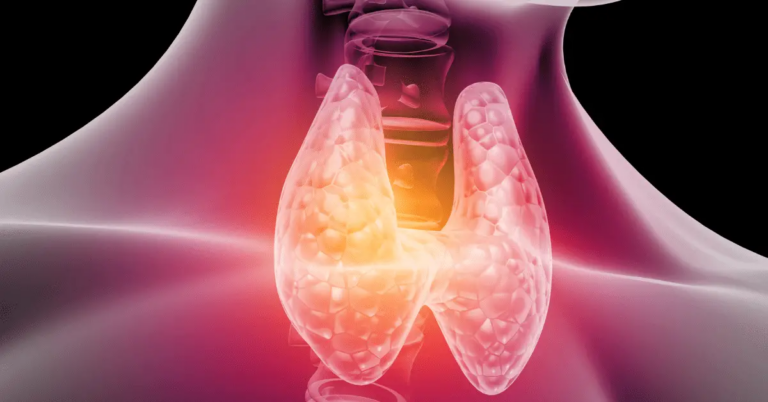You inherit half your genes from your mother and half from your father—or so the common understanding goes. But dig a little deeper into the science, and the story becomes more interesting. Some traits aren’t split down the middle. A select few are passed down only through mothers, thanks to the unique biology of mitochondrial DNA and the way certain genes are linked to the X chromosome.
Ever wondered why your son is color blind when no one else in the family seems to be? Or why sleep problems run on your side of the family? There’s a reason for that. From metabolism and memory to intelligence and emotional resilience, maternal genes carry more weight than most people realize.
Here are ten traits and health patterns that come exclusively, or almost entirely, from mothers. Some are helpful, others pose challenges, but all of them offer insight into how maternal inheritance quietly shapes your child’s development, health, and potential.
1. Mitochondrial DNA and Cellular Energy
Every cell in your body has mitochondria—tiny structures often called the “powerhouses” of the cell. They’re responsible for converting food into usable energy, fueling everything from your heartbeat to brain activity. What’s less commonly known is this: all of your mitochondria, and the DNA inside them, come solely from your mother. Fathers don’t contribute any mitochondrial DNA (mtDNA) to their children. It’s a one-way genetic handoff.
This matters for two main reasons: energy and disease. First, since mitochondrial DNA controls how efficiently your cells produce energy, variations in mtDNA can influence things like stamina, fatigue levels, and even how your body handles physical stress. Some children inherit mitochondrial variants that give them an edge in endurance and metabolism. Others may inherit mutations that interfere with energy production, leading to mitochondrial disorders. These can range from mild fatigue to more serious issues affecting the muscles, brain, or heart.
Second, mitochondrial DNA plays a role in aging. As we get older, our mitochondria accumulate damage, especially from oxidative stress. If a mother passes on already-compromised mitochondria—due to mutations or environmental exposure during her lifetime—that can speed up age-related cellular decline in her children. Researchers are also exploring links between mtDNA and neurodegenerative diseases, many of which involve energy dysfunction in the brain.
Since mitochondrial DNA doesn’t recombine or mix the way nuclear DNA does, the same maternal line can carry mtDNA mutations for generations. That makes it a useful tool for tracing ancestry, but also a potential risk factor for inherited conditions.
In practical terms, if there’s a family history of mitochondrial disease, unexplained fatigue, or early aging patterns, genetic counseling or mitochondrial testing might be worth considering. And even without a known diagnosis, supporting mitochondrial health through good nutrition, regular movement, and avoiding toxins like tobacco smoke can go a long way in maintaining cellular energy for the long haul.
2. Intelligence and Cognitive Function
One of the more surprising areas where maternal genetics takes the lead is intelligence. While both parents influence cognitive development, research consistently shows that a child’s intelligence is more strongly linked to the mother’s genetic contribution. This comes down to the X chromosome.
Genes associated with intelligence are primarily located on the X chromosome. Women have two X chromosomes, while men have only one. That means mothers provide twice the X-linked genetic material compared to fathers. For sons, this is even more direct—they receive their only X chromosome from their mother, meaning maternal influence on cognitive traits is dominant by default.
Long-term studies have confirmed this link. One major analysis involving over 12,000 adolescents found that a mother’s IQ was the strongest predictor of her child’s IQ—more so than socioeconomic status, education level, or even the father’s intelligence. The effect isn’t absolute, but the genetic foundation is clearly weighted toward the maternal side.
There’s another layer: the brain is packed with mitochondria, and as mentioned earlier, mitochondria—and their DNA—come exclusively from mothers. Brain tissue has one of the highest energy demands in the body. If mitochondrial function is subpar, cognitive efficiency can take a hit. So mitochondrial health and X-linked genes together make maternal influence on intelligence even more significant.
Of course, genes aren’t destiny. They provide the wiring, but the environment shapes how that wiring is used. A nurturing home, access to education, stable emotional support—these all have a measurable impact on cognitive performance, regardless of genetic baseline. Still, understanding the maternal weight behind intelligence can give families a more realistic picture of where certain strengths (or challenges) may come from—and where early support can make a difference.

3. Vision and Eye Health
When it comes to eye conditions, maternal inheritance plays a larger role than many people realize, especially in traits linked to the X chromosome and mitochondrial DNA.
Take color blindness as a prime example. The most common forms—like red-green color blindness—are caused by mutations on the X chromosome. Women have two X chromosomes, so even if one carries the mutation, the other can often compensate. Men, on the other hand, have only one X chromosome, which they inherit from their mother. That means if a mother carries the mutation, there’s a 50% chance her son will express it, even if she has no symptoms herself.
Another vision issue with maternal ties is pathological myopia—a severe form of nearsightedness that can lead to retinal damage and other complications. While common myopia can result from environmental factors like screen time or reading habits, pathological myopia often has a genetic component with stronger links to the maternal line.
Mitochondrial inheritance also comes into play. The retina is a highly energy-dependent tissue, packed with mitochondria. Mutations in mitochondrial DNA—again, inherited only from the mother—can impair retinal function and are associated with rare but serious conditions like Leber’s hereditary optic neuropathy (LHON), which can cause sudden vision loss, particularly in young men.
These patterns mean that a mother’s visual health and family history can provide valuable clues about her child’s risk for certain eye problems. If there’s a history of color blindness, severe myopia, or unexplained vision loss, it’s worth flagging early with an ophthalmologist. Early screening, especially in boys, can help catch potential issues while they’re still manageable.
4. Sleep Patterns and Disorders
Sleep isn’t just a habit—it’s a biologically regulated process influenced by genetics. And research shows that many aspects of sleep are passed down primarily from mothers.
Studies have found a strong correlation between a mother’s sleep quality and her child’s sleep behavior, particularly in early childhood. This includes how easily a child falls asleep, how long they stay asleep, and how rested they feel upon waking. These similarities aren’t just the result of shared routines, but there’s a genetic basis behind them. One study in particular showed that maternal insomnia symptoms were associated with measurable differences in their children’s sleep architecture, even when controlling for environmental factors.
Genetics also plays a role in susceptibility to sleep disorders. Insomnia, one of the most common sleep disturbances, has a strong heritable component, estimated at up to 58%. Since many sleep-regulating genes are located on the X chromosome, maternal inheritance is a likely factor, particularly in sons.
In some cases, mitochondrial DNA may contribute as well. Since mitochondria help regulate cellular energy, they influence circadian rhythm stability—how well the body maintains a consistent sleep-wake cycle. Mitochondrial dysfunction can throw this rhythm off, contributing to fatigue, delayed sleep phase disorder, or difficulty with restorative sleep.
If a mother has a history of sleep issues, especially chronic insomnia, it’s worth monitoring similar patterns in her children early on. That doesn’t mean the outcome is fixed, but it suggests a need for proactive habits. Maintaining consistent bedtimes, reducing evening screen exposure, and creating calming pre-sleep routines can help offset inherited tendencies toward poor sleep.
5. Emotional Health and Stress Response
Emotional regulation and stress sensitivity aren’t just shaped by life experiences—they also run in families, and in many cases, the genetic influence comes predominantly from mothers.
Several studies have identified a maternal link to traits like anxiety sensitivity, mood instability, and emotional reactivity. One explanation lies in the way the brain processes serotonin, a key neurotransmitter involved in mood regulation. Low maternal serotonin levels, often rooted in genetic variation, have been associated with a higher risk of emotional dysregulation and behavioral issues in children, including heightened stress responses and attention difficulties.
This isn’t solely about biochemistry. Some of these traits may be inherited through epigenetic changes, modifications in how genes are expressed, often shaped by a mother’s stress levels during pregnancy or early life experiences. Research has shown that children of mothers who experienced high stress during pregnancy may carry epigenetic changes that make them more reactive to stress or prone to anxiety-like behavior later in life.
There’s also a notable gender link. For instance, studies have found stronger associations between maternal depression and daughters’ risk of developing mood disorders. Whether this is due to hormonal, social, or genetic factors (or all three) is still being explored, but the maternal influence is clear.
This doesn’t mean emotional outcomes are predetermined. But it does suggest that a family history of anxiety, depression, or emotional sensitivity, especially on the mother’s side, shouldn’t be dismissed as “just personality.” Instead, it’s an opportunity to support emotional resilience early. This might include modeling healthy coping strategies, fostering open communication, or integrating evidence-based tools like mindfulness or cognitive behavioral techniques into daily life.
6. ADHD and Behavioral Traits
Attention-deficit hyperactivity disorder (ADHD) often runs in families, and maternal genetics appears to play a central role in that transmission. Research estimates that up to 91% of ADHD risk is heritable, and several studies have shown stronger associations when the condition is present on the mother’s side.
One key factor is serotonin regulation. Serotonin helps manage mood, attention, and impulse control. Low maternal serotonin levels, often tied to genetic variants, have been linked to a higher risk of ADHD symptoms in children. One study found that children of mothers with low serotonin had 1.5 to 2.5 times greater odds of developing ADHD. This connection persisted even when controlling for environmental stressors, pointing to a strong genetic underpinning.
X-linked genes may also contribute. Since boys receive their single X chromosome from their mothers, any ADHD-related variants located on that chromosome are more likely to be expressed, especially in sons. This may help explain why ADHD is more commonly diagnosed in boys and why maternal influence is often more evident.
Behaviorally, these genetic patterns show up in challenges with focus, emotional regulation, and impulse control. If a mother—or someone on her side of the family—has a history of these traits, it’s worth watching for early signs in her children.

7. Menarche and Menopause Timing
When a woman gets her first period, or when she reaches menopause, isn’t random. These reproductive milestones are strongly influenced by maternal genetics. In fact, one of the best predictors for the timing of menarche or menopause is the age at which a woman’s mother experienced the same event.
This matters because the timing of these hormonal shifts isn’t just about reproduction—it carries long-term health implications. Early menarche (typically before age 12) is associated with increased risks of breast cancer, endometrial cancer, type 2 diabetes, and cardiovascular disease. On the other end, early menopause (before age 45) has been linked to osteoporosis, heart disease, and cognitive decline. Late menopause, while extending fertility, can also raise the risk of hormone-sensitive cancers.
Genetic studies have identified variants related to ovarian aging, follicle depletion, and hormone regulation, many of which are inherited directly from the maternal line. These influence not just when menstruation begins or ends, but also menstrual cycle regularity and fertility window length.
If a mother experienced early menopause, irregular cycles, or struggled with fertility, it’s worth being proactive. That may mean earlier hormone level monitoring, fertility planning, or discussing bone and cardiovascular health with a provider sooner than average.
8. Metabolism and Weight Regulation
If you’ve ever wondered why some people gain weight easily despite healthy habits, maternal genetics might offer part of the explanation. The way your body processes and stores energy—your metabolism—is influenced by a combination of nuclear and mitochondrial genes. And since mitochondrial DNA comes exclusively from your mother, her metabolic blueprint plays a central role.
Mitochondria help convert food into usable energy. Mutations in mitochondrial DNA can impair this process, leading to inefficient energy use, fatigue, and in more severe cases, metabolic disorders. One such example is MELAS (Mitochondrial Encephalomyopathy, Lactic Acidosis, and Stroke-like episodes), which interferes with how the body handles energy at the cellular level. While rare, even mild mitochondrial dysfunction can subtly influence how the body regulates weight and stores fat.
There’s also emerging evidence that maternal genes influence the proportion of brown fat, metabolically active fat that helps burn calories and regulate body temperature. Brown fat acts as a protective factor against obesity, and some studies suggest that children inherit more of their brown fat activity from their mother than from their father. Meanwhile, genes associated with white fat storage and central obesity may be more influenced by the paternal side.
Beyond fat distribution, maternal influence extends to appetite regulation, insulin sensitivity, and how the body responds to physical activity. These aren’t single-gene traits—they involve complex interactions—but the maternal contribution is significant enough to impact lifelong weight tendencies.
9. Aging and Longevity
How fast—or gracefully—you age is partly written in your genes. And when it comes to the cellular mechanics of aging, maternal inheritance plays a key role.
The primary reason? Mitochondrial DNA, once again. Because mitochondria fuel the body’s cells and manage oxidative stress, their function directly affects how cells age. Over time, mitochondrial DNA accumulates mutations—either inherited or triggered by environmental exposure—that lead to decreased energy production, increased cellular damage, and accelerated aging. Since all mitochondrial DNA comes from the mother, her mitochondrial health sets the baseline for how efficiently this process unfolds in her children.
Research has shown that children of mothers with mitochondrial mutations may experience an earlier onset of age-related decline, including fatigue, cognitive slowing, or reduced resilience to physical stress. These effects can appear even in the absence of a formal mitochondrial disease diagnosis.
There’s also an epigenetic dimension. A mother’s health and exposures during pregnancy, such as diet, stress levels, and toxins, can influence the child’s gene expression patterns, affecting how their body handles inflammation, cellular repair, and aging-related pathways decades later.
Aging isn’t just about visible changes like wrinkles or gray hair. It’s about how well the body maintains muscle mass, cardiovascular health, metabolic efficiency, and brain function. If there’s a strong maternal pattern of early aging, chronic fatigue, or age-related illness, it’s worth considering targeted strategies earlier in life, such as antioxidant-rich nutrition, physical activity, stress reduction, and avoidance of smoking or environmental toxins.
10. Exercise Endurance and Muscle Energy
Some people seem naturally built for endurance—able to push through long runs, recover quickly, and resist fatigue. While training and mindset matter, part of that stamina is inherited. And once again, maternal genetics are central.
Endurance capacity depends heavily on mitochondrial efficiency. Muscle cells, especially those involved in sustained aerobic activity, require large amounts of energy. The mitochondria in those muscle fibers convert oxygen and nutrients into usable fuel. Because mitochondrial DNA is inherited solely from the mother, her mitochondrial quality directly influences her child’s potential for aerobic performance.
But it doesn’t stop there. Muscle fiber composition is also partly under maternal control. Slow-twitch fibers, which support endurance and resist fatigue, tend to be more influenced by maternal genes. These fibers enable prolonged physical effort and efficient oxygen utilization, key traits in distance runners, cyclists, and endurance athletes.
This doesn’t mean a child is destined to be a marathoner just because their mom was athletic—or that they’re limited if she wasn’t. But if endurance comes easily, or fatigue seems to set in faster than expected, maternal genetics may be at play.
This information can be useful beyond athletics. For example, in individuals with low energy, early fatigue during moderate activity, or poor exercise recovery, mitochondrial dysfunction—sometimes inherited—should be on the differential. In these cases, medical evaluation and targeted interventions (including nutritional support like CoQ10 or carnitine under professional supervision) may help.
Understanding the maternal link to endurance isn’t just about performance—it’s about energy regulation, recovery, and physical resilience. Whether someone is training for sport or just trying to stay active, knowing what they’ve inherited can guide smarter, more personalized choices.
My Personal RX on Strengthening What’s Inherited
Genetics isn’t a fixed sentence. Yes, we inherit traits from our parents, but we also inherit opportunities: the chance to shape how those traits express themselves through environment, nutrition, gut health, and stress management. The emerging science of epigenetics reveals that our daily choices can impact how genes are expressed, whether “on” or “off,” even across generations. So when it comes to supporting both moms and kids, we’re not just thinking about health today—we’re shaping lifelong patterns of resilience. With the right supplements, meals, and habits, we can help the next generation thrive beyond their blueprint.
- Support the Gut for Generational Health: A child’s gut health begins with mom’s. MindBiotic is a family-friendly supplement featuring probiotics, prebiotics, and Ashwagandha to support digestion, immunity, and emotional regulation, key for both moms under stress and kids in development.
- Make Family Meals Count for More Than Calories: The Mindful Meals cookbook offers 100+ kid-friendly, gut-boosting recipes that lay the foundation for better digestion, behavior, and brain development—plus stress support for busy parents.
- Create a Colorful Plate at Every Age: Phytonutrients found in colorful fruits and vegetables support detox pathways and DNA repair. Aim to include 3+ colors on every plate, especially in growing kids.
- Model Consistency, Not Perfection: Kids inherit habits, not just genes. Showing them how to make balanced food choices, move daily, and prioritize rest has a greater long-term impact than aiming for flawless routines.
- Prioritize Sleep for the Whole Household: Sleep affects hormone regulation, immune resilience, and emotional stability at every age. Create a calming bedtime ritual that works for both mom and child.
- Teach Stress Tools Early: Mindfulness, breathwork, and body awareness are lifelong skills. Introducing simple calming techniques in childhood helps build emotional intelligence and nervous system regulation.
- Balance Blood Sugar to Protect Long-Term Health: High-sugar diets in childhood can impact metabolic health later on. Build meals around fiber, healthy fats, and protein to help kids and adults avoid energy crashes and mood swings.
- Stay Active Together: Movement strengthens muscles, minds, and bonds. Whether it’s a dance break, nature walk, or family yoga, make physical activity a shared experience.
- Filter Your Environment: Children are especially vulnerable to environmental toxins. Use non-toxic household products, filtered water, and fresh air to reduce exposure and support detox organs like the liver and kidneys.
- Celebrate What You’re Building, Not Just Avoiding: Healthy habits aren’t about fear—they’re about empowerment. When you nurture resilience through food, movement, and mindfulness, you’re not just managing what’s inherited—you’re strengthening what’s possible.











 Subscribe to Ask Dr. Nandi YouTube Channel
Subscribe to Ask Dr. Nandi YouTube Channel










